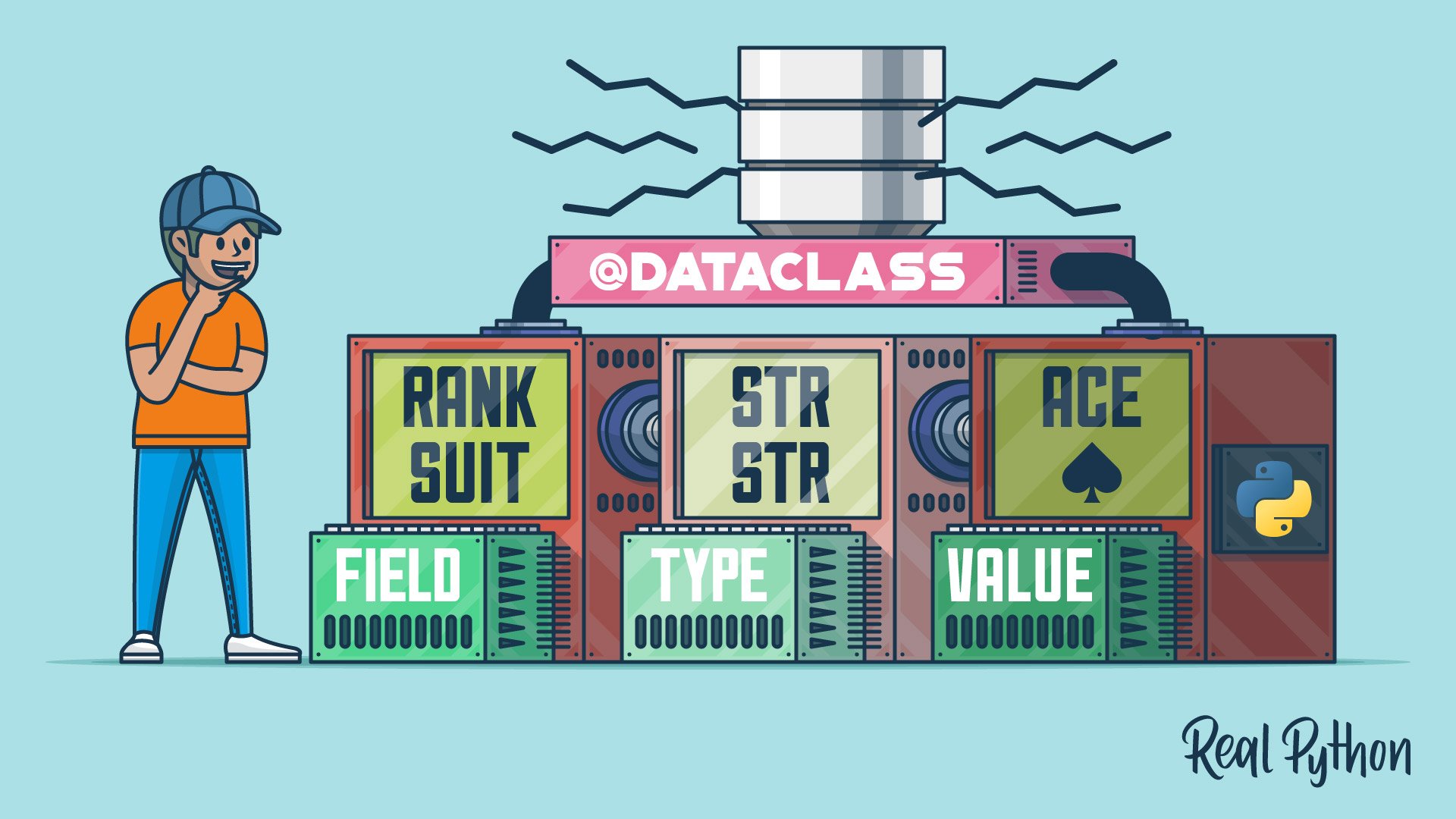dataclasses
The Python dataclasses module provides functionality for creating and working with user-defined data classes. These types of classes are mainly used to store data as attributes (fields) but can provide more functionality.
Data classes also provide default implementations for some common special methods, including .__init__(), .__repr__(), .__eq__(), and .__hash__(). This behavior saves you from writing the associated boilerplate code.
Here’s a quick example:
>>> from dataclasses import dataclass
>>> @dataclass
... class Point:
... x: int
... y: int
...
>>> point = Point(1, 2)
>>> point
Point(x=1, y=2)
Key Features
- Automatically generates special methods like
.__init__(),.__repr__(), and.__eq__() - Supports default values and default factories for fields
- Allows customization of field behavior with field metadata
- Provides a way to create immutable data classes
Frequently Used Classes and Functions
| Object | Type | Description |
|---|---|---|
@dataclasses.dataclass |
Decorator | Decorates a class to turn it into a data class |
dataclasses.field() |
Function | Customizes individual fields of a data class |
dataclasses.asdict() |
Function | Converts a data class instance to a dictionary |
dataclasses.astuple() |
Function | Converts a data class instance to a tuple |
Examples
Creating a data class with default values for fields:
>>> from dataclasses import dataclass
>>> @dataclass
... class Circle:
... radius: float = 1.0
...
>>> circle = Circle()
>>> circle.radius
1.0
Converting a data class to a dictionary:
>>> from dataclasses import asdict, dataclass
>>> @dataclass
... class Point:
... x: int
... y: int
...
>>> point = Point(5, 6)
>>> asdict(point)
{'x': 5, 'y': 6}
Common Use Cases
- Facilitating the creation of classes that are mainly used for storing data
- Automatically generating common methods like
.__init__(),.__repr__(), and.__eq__() - Converting data class instances to dictionaries or tuples for serialization
Real-World Example
Suppose you need to manage a collection of employees with attributes like .name, .age, and .position. You can use dataclasses as shown below:
>>> from dataclasses import dataclass
>>> @dataclass
... class Employee:
... name: str
... age: int
... position: str
...
>>> employees = [
... Employee("Alice", 30, "Developer"),
... Employee("Bob", 25, "Designer"),
... ]
>>> for employee in employees:
... print(employee)
Employee(name='Alice', age=30, position='Developer')
Employee(name='Bob', age=25, position='Designer')
In this example, the dataclasses module streamlines the creation and management of employee records.
Related Resources
Tutorial
Data Classes in Python (Guide)
Learn how a Python dataclass reduces boilerplate, adds type hints and defaults, supports ordering and frozen instances, and still plays well with inheritance.
For additional information on related topics, take a look at the following resources:
- Write Pythonic and Clean Code With namedtuple (Tutorial)
- Python's Magic Methods: Leverage Their Power in Your Classes (Tutorial)
- Using Data Classes in Python (Course)
- Data Classes in Python (Quiz)
- Writing Clean, Pythonic Code With namedtuple (Course)
- Write Pythonic and Clean Code With namedtuple (Quiz)
- Python's Magic Methods in Classes (Course)
- Python's Magic Methods: Leverage Their Power in Your Classes (Quiz)
By Leodanis Pozo Ramos • Updated June 26, 2025

